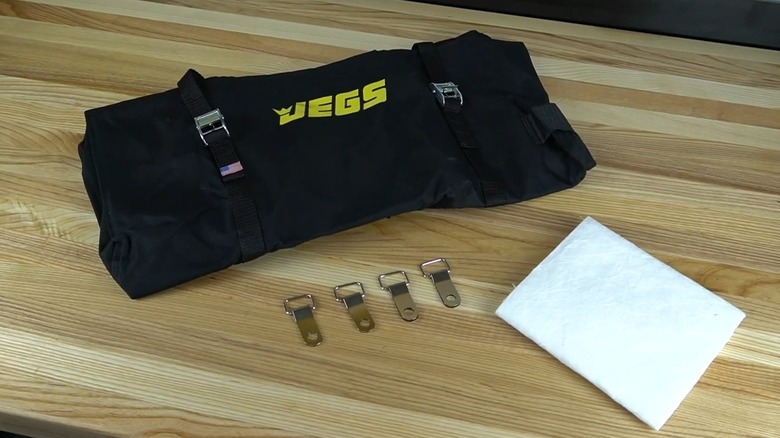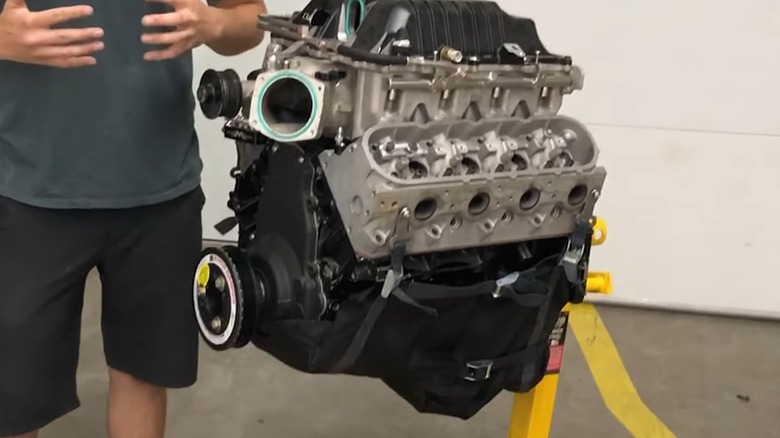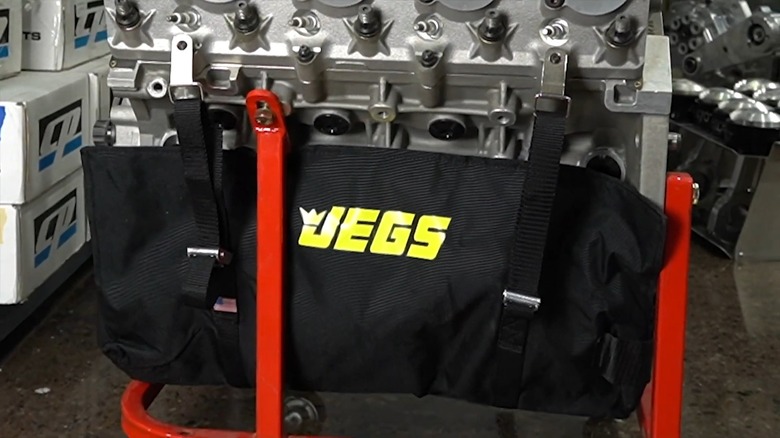What Is An Engine Diaper And What Are They Used For?
In the years since the combustion engine came along, the automotive scene has hosted all kinds of models. Some have become classics, while others have fallen by the wayside. In 2024, there are a few especially impressive engines in production, but the perfect, failure-proof design has yet to be realized. Engines' complexity can lead to a variety of failures while on the road, so all drivers can do is prepare as best they can for the worst-case scenario. A common method using an engine diaper.
Though the average driver might not see the need for one, if you're someone who frequents the racetrack, an engine diaper — also known as a lower-engine containment device — is basically essential. They're basically bags made of heavy-duty materials, like heat-resistant Kevlar and ballistic nylon, that hook underneath the engine. If the engine malfunctions or fails, engine diapers contain fluids and debris so that they don't end up scattered across the track. More importantly, they prevent them from touching and harming the driver. Absorbent pads are situated within to help with cleanup. And they typically aren't difficult to install.
How to install an engine diaper
Getting an engine diaper attached to your car's engine isn't too strenuous. Probably the hardest part is the first step, which is to hoist your engine up and out of your car. If you don't have an engine hoist of your own, there are places you can rent one. Once it's secured and suspended, you can get your pad and diaper attached in no time at all.
1. Double-check to make sure the absorbent pad is in place at the diaper's bottom.
2. Scoop your engine from below with the diaper, pulling it up snugly to the bottom of the engine.
3. Secure the straps per the provided instructions. Typically, you'll fasten them to the engine using header mounting bolts.
4. Tighten the straps so that the diaper sits snugly against the engine. Take a look around to make sure the diaper and straps won't be in the way of any exhaust or moving components.
That's pretty much all it takes to put on an engine diaper. Some come with easy-release clips on the straps so that once it's on, you can remove the diaper without having to remove the mounting bolts every time. They're also designed to accommodate the lines that run from your engine to other parts of your car.
How much do engine diapers cost?
Engine diapers aren't necessary for everyone — the average commuter might never need one. But if you want one, the cost will be in the three-digit range.
On the lower end of the spectrum, there are those that sit in the neighborhood of $115 to $155 . Others cost considerably more, in the $300-plus area. Several factors can influence these prices, such as the brand, materials used, the inclusion or exclusion of mounting hardware, and more. Typically, replacement engine diaper pads and mounting hardware aren't too pricey. Not all diapers and related gear are approved by all racing associations, however, so this is something to think about before making a purchase.
There are loads of race-ready engines out there, including some iconic engines that changed racing forever. Despite their impressive capabilities and makes, though, things can go awry. But engine diapers help mitigate the damage and keep people safe from the unexpected.


